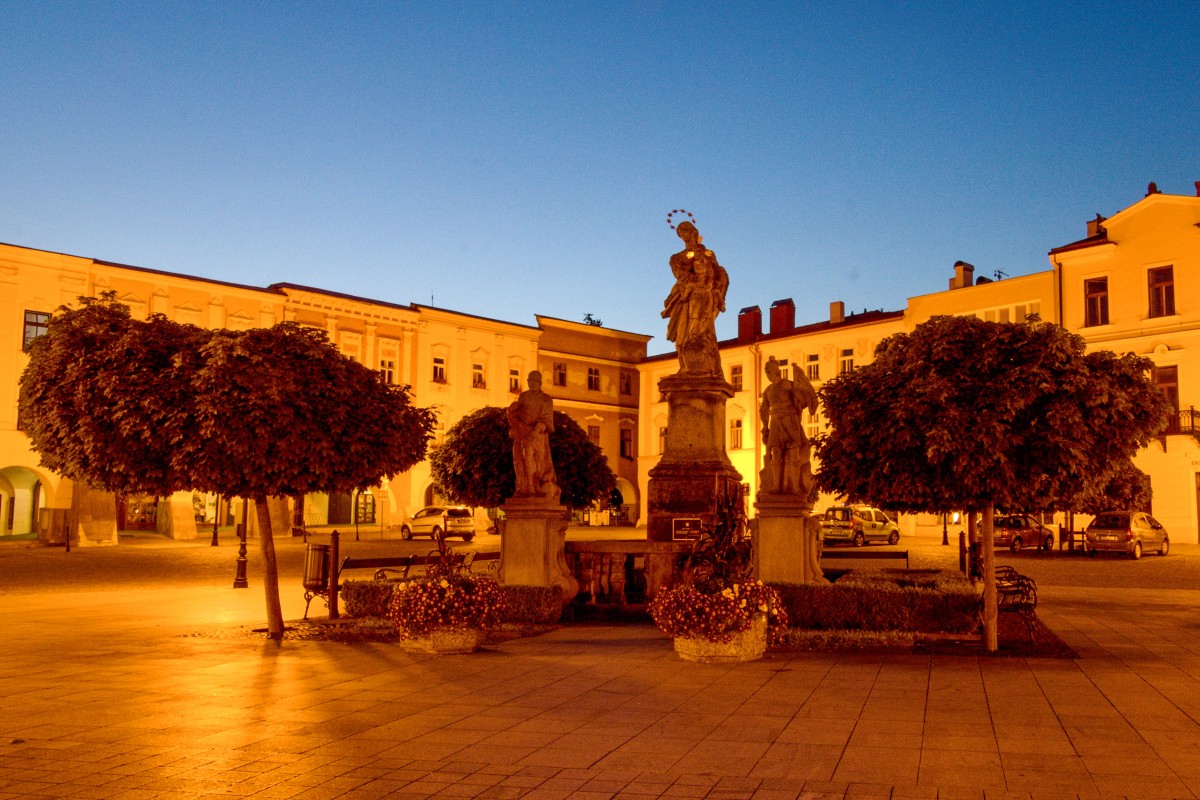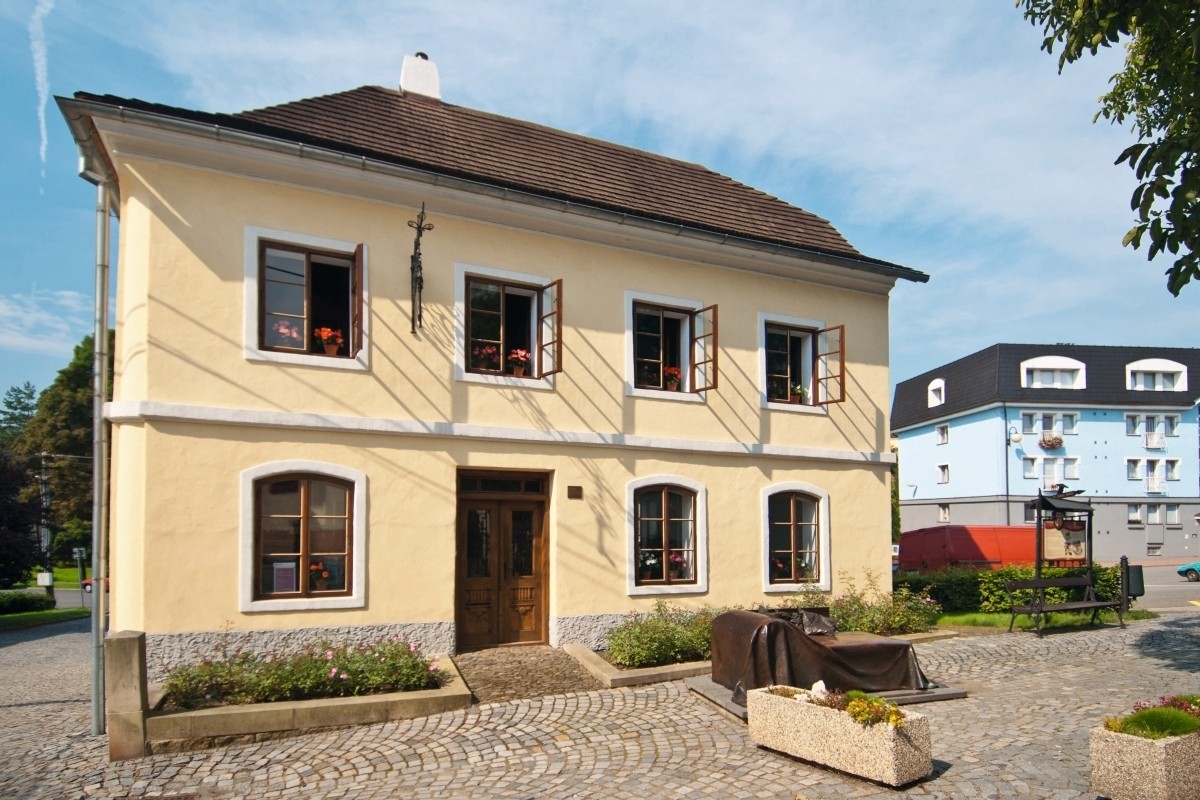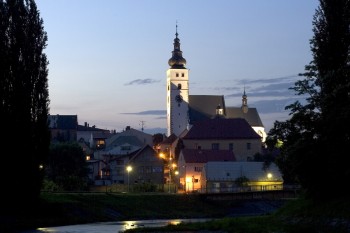Příbor
Příbor is one of the oldest towns in Northeast Moravia. It lies on both banks of the River Lubina. From three sides it is surrounded by beautiful scenery of the foothills of the Beskydy Mountains with a view of Štramberk Tower (Trúba), Hukvaldy Castle and Radhošť Mountain. The town has rich history.
It was established in 1251 by the Frank of Hückeswagen as a settlement with urban rights. The first written notice about the town dates back to 1251 and it is recorded in a document from December, the 12th issued by the Margrave of Moravia, later King of Bohemia, Přemysl Otakar II. The document confirms that the count was the founder of the parish Church of Nativity of Virgin Mary.
The ancient "Polish" trading route was crossing the rectangular-shaped square of Příbor from the very beginning. In those times the town was called Vriburch, later also Freiberg and Czech Przybor.
An important chapter in the history of Příbor is education. Primary parish school existed here already in 1541. A great asset in this area was the establishment of Piarist College and grammar school in 1694. The arrival of the Piarists to Príbor caused a rapid bloom of education. Secondary education could be acquired even by students from lower social classes. By the establishment of The Czech Teachers Institute in 1875 the town became the education centre of Northeast Moravia. During its existence up to 1938 many great pedagogues and specialist in education and culture graduated here. Príbor was rightly called Litomyšl of Moravia.
From the second half of 15th century the town belonged to the Olomouc bishopric and its bishops were very fond of the town, especially Cardinal Francis of Dietrichstein, who improved the town’s Coat-of-Arms and granted the town a number of privileges and rights. His Coat-of-Arms is still situated on the house number 6 of Sigmund Freud Square, at which he lived during his stays in the town.
Příbor was a birthplace and home to many important personalities, who helped to make the town famous. St. Jan Sarkander lived here with his mother and attended Příbor’s primary parish school.
Local secondary school was attended by Antonín Cyril Stojan, later Archbishop, who had lived here and studied to be a priest for eleven years. Příbor is the birthplace of the founder of Moravian topography and historian, Řehoř Wolný; philosopher and revivalist Bonifác Buzek; founder of psychoanalysis, honorary citizen of the town Příbor Dr. Sigmund Freud; sculptor František Juraň, writer Josef Kresta and many others.
Population: ca. 8 500, town districts: Hájov, Prchalov
Town’s coat of arms
The initial emblem of Pribor was same as the coat of arms of Hückeswagen masters, by whom the town was established before the year 1251. Their sign was composed of three red chevrons on a silver background. (Source: Ladislav Baletka, Jiří Louda, "Znaky měst Severomoravského kraje" - Town symbols of the North-Moravian region) Profil Ostrava 1980).
In the year 1615 the bishop of Olomouc, Cardinal Francis of Dietrichstein changed it by adding elements symbolizing Olomouc bishopric as well as other elements of his own coat of arms (citation: „we give it a shield and place three chevrons of yellow or gold in the red middle of the shield , each reaching higher than the previous one, two pruning hooks fawn or silver in colour, with their handles clove and the letter F to stand for our initial Christian name - and the three bowls also in fawn or silver on the top...".
The town’s flag
A flag was handed over to the mayor Ing. Milan Strakoš . Mayor’s companions on that day were: his deputy Mr. Jan Monsport and the Chronicler of the town, Mr. Lubomír Loukotka. Ceremony took place on the 5th of March 1996 at the Czech Parliament building in Prague. The flag was handed over to our representatives by the Speaker of Czech Parliament, PhD. Milan Uhde in a form of a "Decision no. 91" granting own flag to the time-honoured town of Příbor.
Its appearance goes back to the oldest known signs of the town. Flag is composed of three parts: two white stripes on both sides and red field in the middle (format ratio white to red is 1:3:1). On the red background there are three golden chevrons placed one above the other. Stripes of white on each side are symbolizing pruning hooks of the town’s coat of arms.
Project was designed by PhD. Karel Miller, Director of the State Regional Archive in Opava and then accepted by the Heraldic Committee of Parliament of Czech Republic. On the 8th of September, 1996, being the day of town’s fair the flag waved for the first time on the top the town hall’s roof.










